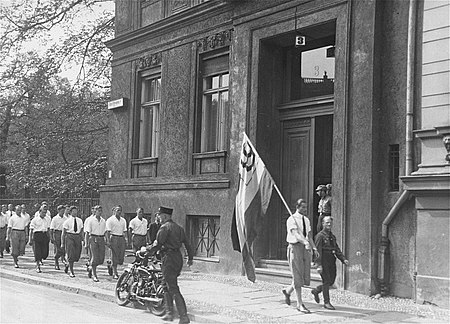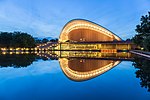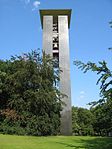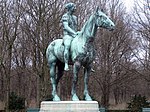Institut für Sexualwissenschaft

The Institut für Sexualwissenschaft was an early private sexology research institute in Germany from 1919 to 1933. The name is variously translated as Institute of Sex Research, Institute of Sexology, Institute for Sexology or Institute for the Science of Sexuality. The Institute was a non-profit foundation situated in Tiergarten, Berlin. It was the first sexology research center in the world.It was headed by Magnus Hirschfeld, who since 1897 had run the Wissenschaftlich-humanitäres Komitee ('Scientific-Humanitarian Committee'), which campaigned on progressive and rational grounds for LGBT rights and tolerance. The Committee published the long-running journal Jahrbuch für sexuelle Zwischenstufen. Hirschfeld built a unique library at the institute on gender, same-sex love and eroticism.The institute pioneered research and treatment for various matters regarding gender and sexuality, including gay, transgender, and intersex topics. In addition, it offered various other services to the general public: this included treatment for alcoholism, gynecological examinations, marital and sex counseling, treatment for venereal diseases, and access to contraceptive treatment. It offered education on many of these matters to both health professionals and laypersons.The Nazi book burnings in Berlin included the archives of the institute. After the Nazis gained control of Germany in the 1930s, the institute and its libraries were destroyed as part of a Nazi government censorship program by youth brigades, who burned its books and documents in the street.
Excerpt from the Wikipedia article Institut für Sexualwissenschaft (License: CC BY-SA 3.0, Authors, Images).Institut für Sexualwissenschaft
John-Foster-Dulles-Allee, Berlin Tiergarten
Geographical coordinates (GPS) Address Nearby Places Show on map
Geographical coordinates (GPS)
| Latitude | Longitude |
|---|---|
| N 52.5189 ° | E 13.3652 ° |
Address
Haus der Kulturen der Welt
John-Foster-Dulles-Allee 10
10557 Berlin, Tiergarten
Germany
Open on Google Maps











